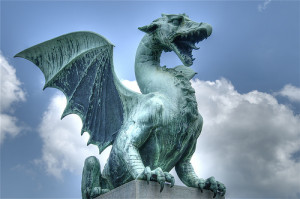We watched the 7th episode of Dragons’ Den yesterday night on BBC 2, and as usual some entrepreneurs didn’t have their figures prepared.
Now, when you go and face an investor to raise funds, figures are one of the most important things. Your product might be great, if you can’t explain your company’s business model, you won’t gain their confidence.
Basic definitions
I’ve put together a few definitions and explanations about the figures you need to prepare before you meet an investor.
– Turnover (or revenue): amount of money taken by a company from its normal business activities (i.e. sales of products and services to customers) in a particular period.
– Gross profit: difference between turnover and cost of producing the goods or services sold, before deducting overheads. Gross profit = net sales – cost of goods sold.
– Gross margin: ratio of gross profit to cost of goods sold, expressed as a percentage. Gross margin = (turnover – cost of goods sold) / turnover * 100. It is a good indication of the profitability of a company at the most fundamental level. Companies with higher gross margins will have more money left over to spend on other business operations, such as R&D and marketing.
– Net profit (or bottom line): difference between turnover and total costs, including overheads and taxes. Net profit = net sales – total costs. It is a good measure of the profitability of a business.
– Overheads: ongoing expenses of operating a business and cannot be directly associated with the products or services being sold (rent, utilities costs, salaries, insurance, advertising, taxes etc.). Overheads = gross profit – net profit. You should have a rough idea of the details of all expenses, so you can explain to the potential investors where money is spent.
Let’s take an example. Last night, Simon presented his wooden balance bikes business, called Kiddimoto. He knew his turnover and profit for the last 4 years, even though he was unable to give the details of his company’s expenses. Let’s have a look at Kiddimoto’s figures for each definition I gave above:
-
Turnover for 2010: £490,000 (9,800 units at £50 per unit)
-
Cost of goods sold: £196,000 (£20 per unit)
-
Gross profit: £294,000 (490k – 196k)
-
Gross margin: 60% ((490k – 196k)/490k*100)
-
Net profit: £30,000 (figure Simon gave)
-
Overheads: £264,000 (294k – 30k).
Despite not being able to explain the details of the company’s expenses, Simon managed to secure a deal with 2 Dragons for £75,000 and 30% of his company. Good luck to him!
Company valuation
Knowing what your company is worth is key when raising capital. It is not an exact science and although there are several models out there to help you evaluate your company, remember it’s only worth what someone will actually pay for it.
Evaluating a startup is even more difficult as you don’t have any historical cash flow. So it’s basically up to you to find a process based on comparable companies (i.e. similar companies in your industry) and financial projections. It is all you have to defend your valuation when facing a potential investor.
The figure you are going to come up with needs to be attractive enough for a potential investor, so you don’t want it to be too low. But you don’t want to scare him off with a ridiculously high figure, as he’ll think you’re just not realistic and overestimate your capacities. The key is finding the right balance and working out a credible figure that you can justify.
Back to the Den, the Dragons will sometimes put an entrepreneur on the spot with a “you value your company at 1.5 million, are you serious?” type phrase. That’s usually not a good sign. How do they work out the company valuation? It’s actually quite simple. Take the amount of money the entrepreneur is asking for and the shares he’s willing to give, and use the rule of three.
For instance, Simon from Kiddimoto asked for £75,000 for 10% of his business. He has therefore valued his company at £750,000 (75,000*100/10).
Note that I’m not an expert on startup valuation, so any thoughts and comments are welcome 🙂
photo credit: wili_hybrid
